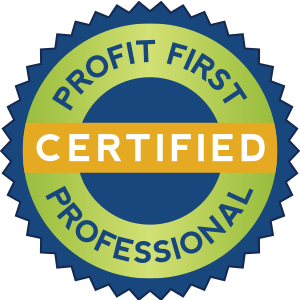As a small business owner, and especially an online service provider, collecting payments from clients is a crucial aspect of your business. Choosing the right invoicing platform can significantly impact your cash flow and client experience. Plus, having the right system in place gives you one less thing to think about as you run your business day-to-day.
This blog will explore various options for payment processing systems, customer relationship management (CRM) systems, and financial management systems, and discuss how they can work together to streamline your invoicing process. Many of these systems have overlapping functionalities, so strategically building your tech stack will not only make your business more efficient, but also save you money.
Payment Processing Systems: The Options
Every business needs to have a payment processing system to collect money from clients. When it comes to payment processing systems, several popular platforms stand out, each with its own pros and cons. Let’s take a closer look at three widely used options, in no particular order:
1. Stripe: Stripe is known for its user-friendly interface and robust features. It supports credit card payments, making it easy for clients to pay you. Stripe offers competitive processing fees and integrates seamlessly with many other platforms and tools.
2. PayPal: PayPal is a widely recognized and trusted payment processor. It allows clients to pay with various methods, including credit cards, bank transfers, and PayPal balances. PayPal also provides a range of additional features, such as invoicing, recurring payments, and international transactions. Keep in mind that you may run into fraudulent charges, and sometimes clients will have to confirm that they have been given the product or service in order for you to get paid.
3. Square: Square specializes in point-of-sale transactions, but it also offers online invoicing capabilities. It’s an excellent choice for businesses that need both in-person and online payment options. Square provides various payment processing tools, hardware options, and a user-friendly dashboard. It also includes an inventory tracker, which is a useful functionality.
These payment systems are typically integrated with other CRM systems to make your life a bit easier, so you don’t have to manage all your client interactions separately. Just know that different platforms have varying fees for processing credit card transactions, and you may have trouble connecting them with QuickBooks Online if that’s a platform you use. And remember to check how much you’ll be paying in fees before you pick a platform so you know how it impacts your profitability!
4. QuickBooks Payments: If you use QuickBooks for financial management, you have the option to collect payment directly through QuickBooks payments. This is a great way to minimize your tech stack and reduce the amount of integrations you have running between softwares–not to mention the fees tend to be less costly than other platforms.
Customer Relationship Management (CRM) Systems
CRM systems help you streamline your client interactions, manage projects, and maintain strong relationships with your clients through automated messages and workflows. These are comprehensive, all-in-one systems where you can keep track of contracts, questionnaires, invoices, payment plans, notes, and meetings. Today we’ll look at two common options for online service providers, Dubsado and HoneyBook, which many of my clients use and love.
1. Dubsado: Dubsado is a comprehensive CRM system designed specifically for service-based businesses. It allows you to centralize your contracts, questionnaires, invoices, payment plans, notes, and schedule meetings in one place. Dubsado integrates with popular payment processors like Stripe, PayPal, and Square, enabling you to process payments seamlessly.
2. HoneyBook: HoneyBook is another popular CRM platform that offers a range of features to streamline your client management process. It allows you to create customized proposals, contracts, and invoices. HoneyBook even has its own payment processing system and doesn’t need to integrate with any other system, making it easy to accept payments from clients.
Choosing a CRM system can be a lifesaver, and it helps you automate your client experience so you don’t have to spend your precious time following up with each lead manually. If you want to get a CRM system set up, look for platforms that give you the specific CRM benefits you want and offer invoicing benefits like automated reminders for overdue payments and the ability to schedule recurring payments. These are things you’ll definitely want to have as you grow and scale your business.
If you leverage a CRM like Honeybook or Dubsado, it’s likely that you’ll use Stripe, PayPal, or Square to collect payment via the invoices your CRM can send.
If you’re also using QuickBooks, you need to be mindful of bookkeeping best-practices when you integrate Dubsado with QuickBooks Online. It’s easy to mistakenly record sales twice, miscategorize transactions, and make reconciliation mistakes. The biggest issue many clients run into is that processing fees aren’t reflecting on their books, but with proper system integration, this can be easily avoided.
Tip: Fees are considered required for businesses, and they are 100% write offs on your taxes. I also highly recommend building these extra costs into your pricing, since it can be annoying for customers if you charge them extra for processing fees. It’s actually illegal to do this in some states, so please avoid this at all costs!
Financial Management Systems
Financial management systems play a crucial role in your business’s overall financial health. Even if you’re using a payment processing system and a CRM already, you still need QuickBooks to manage your finances. The financial snapshots that platforms like Stripe or Dubsado provide are nowhere near the capability of a financial management system. Here are three of the most common platforms:
1. QuickBooks Online (QBO): QBO is a popular choice among small businesses for its comprehensive financial management features. It allows you to create and send professional invoices, track expenses, manage cash flow, and generate reports. Integrating your chosen payment processing system with QBO can streamline your invoicing and bookkeeping processes. I’ve talked about this before, but I’ll always recommend QuickBooks for your business!
2. Wave Payments: Wave Payments is a free financial management platform that offers a range of features for small businesses. It allows you to create and send customized invoices, track payments, and manage your cash flow. While it may not have as many advanced features as QBO, it’s an excellent option for startups and small businesses with basic invoicing needs.
3. Xero: Xero is a cloud-based accounting software that provides a comprehensive suite of financial management tools. It offers invoicing features, expense tracking, bank reconciliation, and customizable reports. Xero is known for its user-friendly interface and integrations with various payment processors. I still think QuickBooks is better, though–read this blog to find out why.
My advice would be to pick a system that makes your bookkeeper’s job easier. Many bookkeepers I know, myself included, prefer QuickBooks above the rest. No matter which platform you choose, be sure to work with a bookkeeper that has a specialty in your system of choice, because it will be a smoother process for everyone involved. If our job is easier, it makes your bill a little cheaper, too!
Integrating All Your Systems
To maximize efficiency and streamline your invoicing process, it’s crucial to integrate these systems effectively. If you use QuickBooks Online for your bookkeeping, integrating your chosen payment processing and CRM systems with QBO will save you tons of time and effort. By syncing all your financial data, you can easily track invoicing, payments, and financial records in one centralized location.
Luckily, this is super easy to do–there are tons of instructions showing you how to set everything up. Or, if you want this taken off your plate, my QuickBooks set up will get everything done for you.
One other thing to note: If you pay contractors, you’ll need to be aware of the 1099 reporting requirements. All your clients who don’t pay with a credit card will need to give you a 1099 after paying more than $600. Check with your bookkeeper or accountant for details, since this is something you don’t want to forget about!
At the end of the day, there are plenty of invoicing, CRM, and financial systems that do the job–the trick is to find the one that works best for you and your customers. Explore the options and do your research. My suggestion is this: Always choose the system that makes it easier for people to pay you, so you can have money in your pocket in a timely manner!


